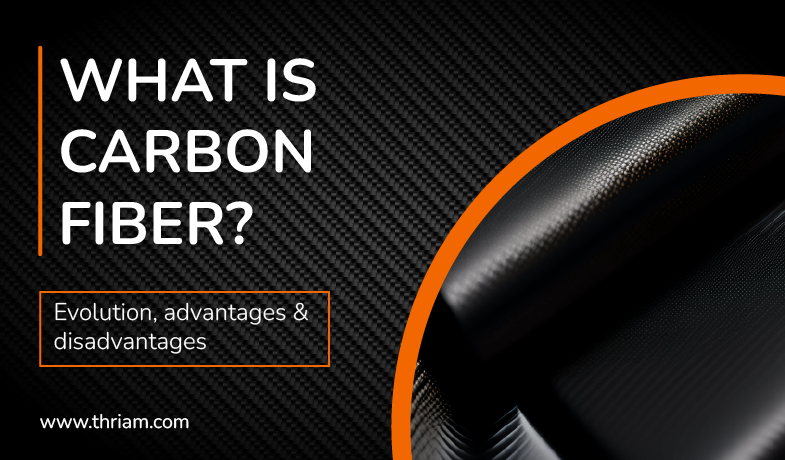Unleashing the Power of Carbon Fiber: Exploring its Revolutionary Applications Across Industries

Carbon fiber is a high-performance material composed of thin, strong crystalline filaments made mostly of carbon atoms. It has gained prominence in various industries due to its exceptional strength, lightweight, and durability.
In this blog, we will explore the definition of carbon fiber, provide a list of applications, explain each application separately, and discuss three advantages and limitations of this versatile material.
Definition of Carbon Fiber
Carbon fiber is a composite material consisting of carbon atoms bonded together in a crystalline structure. It is produced through a complex process called carbonization, where carbon-rich organic fibers, such as polyacrylonitrile (PAN) or petroleum pitch, are heated to high temperatures in an oxygen-depleted environment. This process eliminates impurities and leaves behind carbon atoms tightly bound in long, thin strands.
Applications of Carbon Fiber by industry

- Aerospace Industry: The aerospace industry is one of the primary consumers of carbon fiber due to its exceptional strength-to-weight ratio. Carbon fiber composites are used extensively in aircraft and spacecraft components, including wings, fuselages, tail sections, and structural reinforcements. These applications help reduce overall weight, increase fuel efficiency, and enhance performance.
- Automotive Sector: Carbon fiber has gained popularity in the automotive sector, primarily in high-performance and luxury vehicles. It is employed in various parts, such as chassis components, body panels, interior trims, and wheels. The use of carbon fiber in automobiles helps reduce weight significantly, leading to improved acceleration, handling, and fuel economy.
- Sports and Recreation: Carbon fiber is prevalent in the sports industry, particularly in equipment that requires high strength and lightweight. Bicycle frames, golf club shafts, tennis rackets, and fishing rods often utilize carbon fiber composites. These applications enhance performance by providing superior rigidity and responsiveness while minimizing weight and vibration.
- Civil Engineering: In civil engineering, carbon fiber-reinforced polymer (CFRP) composites find application in infrastructure projects. Reinforcing concrete structures, such as bridges and buildings, with carbon fiber composites improves their durability and resistance to environmental factors. CFRP materials can also be used for seismic retrofitting, pipeline repair, and façade systems.
- Medical Equipment: Carbon fiber plays a crucial role in the manufacturing of medical equipment. It is utilized in prosthetics, orthopedic implants, wheelchairs, and X-ray tables. The lightweight nature of carbon fiber enhances patient comfort, while its high strength provides durability and resistance to wear and tear.
Applications of Carbon Fiber by products
Bicycle Frames
Carbon fiber bicycle frames have gained immense popularity in the cycling world due to their unmatched strength and light weight. The fibers' superior stiffness allows for optimal power transfer, while their minimal weight enhances maneuverability and speed. Carbon fiber frames provide a smooth ride by effectively damping road vibrations. With the ability to mold carbon fiber into complex shapes and designs, bicycle manufacturers can create frames that are not only functional but also visually stunning.
Aircraft Components
Aerospace engineering heavily relies on carbon fiber composites to build lightweight yet robust aircraft components. From wings and fuselages to structural reinforcements, carbon fiber's strength and lightness are critical advantages for improving fuel efficiency and overall performance. These composites also aid in reducing maintenance costs, as carbon fiber is highly resistant to corrosion and fatigue. By utilizing carbon fiber, the aerospace industry has been able to develop faster and more fuel-efficient aircraft.
Sports Equipment
Carbon fiber has become synonymous with high-performance sports equipment, such as tennis rackets, golf clubs, and hockey sticks. By incorporating carbon fiber composites into these products, manufacturers can create lightweight equipment that offers enhanced rigidity and responsiveness. The material's strength provides players with increased control and power. Carbon fiber's adaptability also allows for customizing equipment to individual preferences, enabling athletes to optimize their performance on the field, court, or green.
Advantages of Carbon Fiber
High Strength-to-Weight Ratio:
Carbon fiber possesses exceptional strength and stiffness properties while being significantly lighter than traditional materials like steel or aluminum. This advantage allows for the creation of strong, lightweight structures, reducing overall weight and improving performance.
Corrosion Resistance:
Unlike metals, carbon fiber is highly resistant to corrosion from environmental factors like moisture, chemicals, or UV radiation. This characteristic ensures the longevity and durability of carbon fiber components, especially in harsh environments.
Design Flexibility:
Carbon fiber can be molded into complex shapes and structures, offering designers more freedom in creating innovative and aerodynamic designs. This flexibility allows for customized solutions tailored to specific applications, promoting efficiency and optimization.
Limitations of Carbon Fiber
Cost:
Carbon fiber production involves complex and energy-intensive processes, making it relatively expensive compared to traditional materials. This cost factor may limit its widespread adoption in industries that prioritize cost-effectiveness over performance.
Impact Resistance:
Carbon fiber is brittle and more susceptible to damage from impact or excessive bending compared to metals. Even though it is exceptionally strong under tensile or compressive forces, it can fracture or delaminate when subjected to unexpected impacts.
Recycling and Disposal:
Carbon fiber composites are not easily recyclable due to their complex composition and production methods. Consequently, the lack of efficient recycling techniques poses challenges for sustainable disposal and environmental impact management.
Conclusion
Carbon fiber's impressive characteristics, such as its high strength-to-weight ratio, corrosion resistance, and design flexibility, have led to its diverse range of applications in industries like aerospace, automotive, sports, civil engineering, and medical equipment. While the material offers several advantages, including enhanced performance and reduced weight, it also has limitations, including cost, impact resistance, and recyclability. Continued research and advancements in carbon fiber technology are likely to address these limitations and promote further application and innovation in various industries.



